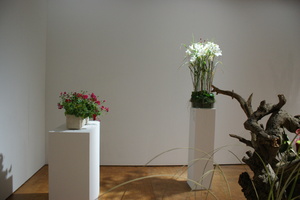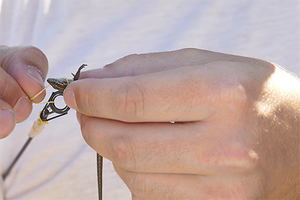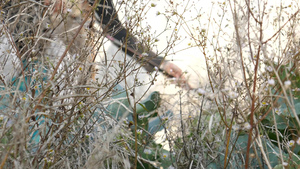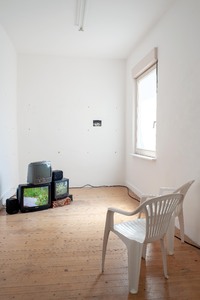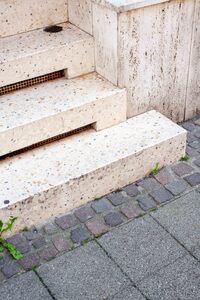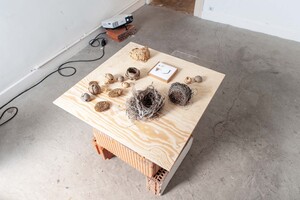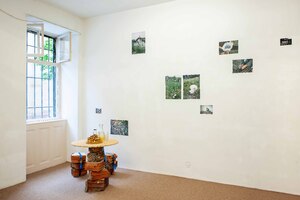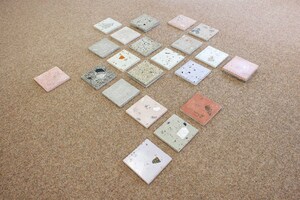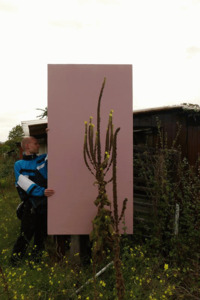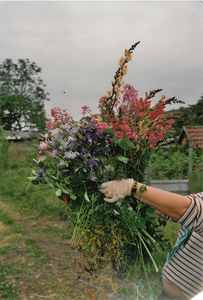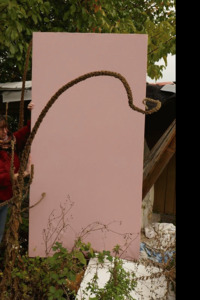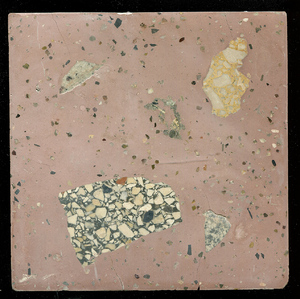"HfG Website"
| Begriff | HfG Website |
| Metakey | Freigabe Nutzung HfG (rights:usage_hfg) |
| Typ | Keyword |
| Vokabular | Rechte |
1792 Inhalte
- Seite 1 von 150
No Mythologies to Follow - Snapshots
- Titel
- No Mythologies to Follow - Snapshots
- Autor/in
- Titel
- No Mythologies to Follow - Snapshots
- Urheberrechtshinweis
- © Johanna Hoth
- Rechtsschutz/Lizenz
- Freigabe Nutzung HfG
- Beziehung/Funktion
- Importiert am
- 30.07.2024
- Übergeordnete Sets
- 1
Videoinstallation
- Titel
- Videoinstallation
- Autor/in
- Kategorie
- Schlagworte
- Titel
- Videoinstallation
- Titel (en)
- Video installation
- Urheberrechtshinweis
- ©Leonie Mühlen
- Rechtsschutz/Lizenz
- Freigabe Nutzung HfG
- Medienersteller/in
- Beziehung/Funktion
- Medien-Beschreibung
- Ausschnitt aus der 3-Kanal-Videoinstallation
3 Fernseher, Lautsprecher, Ziegelabbruch, 2 Kunststoff-Gartenstühle
- Ausschnitt aus der 3-Kanal-Videoinstallation
- Medien-Beschreibung (en)
- Excerpt from the 3-channel video installation
3 televisions, loudspeakers, brick demolition, 2 plastic garden chairs
- Excerpt from the 3-channel video installation
- Projektleiter/in
- Semester
- Studiengang
- Typ der Abschlussarbeit
- Importiert am
- 17.06.2024
- Übergeordnete Sets
- 1
Videoinstallation
- Titel
- Videoinstallation
- Autor/in
- Kategorie
- Schlagworte
- Titel
- Videoinstallation
- Titel (en)
- Video installation
- Urheberrechtshinweis
- ©Leonie Mühlen
- Rechtsschutz/Lizenz
- Freigabe Nutzung HfG
- Medienersteller/in
- Beziehung/Funktion
- Medien-Beschreibung
- Ausschnitt aus der 3-Kanal-Videoinstallation
3 Fernseher, Lautsprecher, Ziegelabbruch, 2 Kunststoff-Gartenstühle
- Ausschnitt aus der 3-Kanal-Videoinstallation
- Medien-Beschreibung (en)
- Excerpt from the 3-channel video installation
3 televisions, loudspeakers, brick demolition, 2 plastic garden chairs
- Excerpt from the 3-channel video installation
- Projektleiter/in
- Semester
- Studiengang
- Typ der Abschlussarbeit
- Importiert am
- 17.06.2024
- Übergeordnete Sets
- 1
Ausstellung
- Titel
- Ausstellung
- Autor/in
- Kategorie
- Schlagworte
- Titel
- Ausstellung
- Titel (en)
- Exhibition
- Urheberrechtshinweis
- ©Leonie Mühlen und Nis Petersen
- Rechtsschutz/Lizenz
- Freigabe Nutzung HfG
- Medienersteller/in
- Beziehung/Funktion
- Projektleiter/in
- Semester
- Studiengang
- Typ der Abschlussarbeit
- Importiert am
- 17.06.2024
- Übergeordnete Sets
- 1
Ausstellung
- Titel
- Ausstellung
- Autor/in
- Kategorie
- Schlagworte
- Titel
- Ausstellung
- Titel (en)
- Exhibition
- Urheberrechtshinweis
- ©Leonie Mühlen und Nis Petersen
- Rechtsschutz/Lizenz
- Freigabe Nutzung HfG
- Medienersteller/in
- Beziehung/Funktion
- Projektleiter/in
- Semester
- Studiengang
- Typ der Abschlussarbeit
- Importiert am
- 17.06.2024
- Übergeordnete Sets
- 1
Ausstellung
- Titel
- Ausstellung
- Autor/in
- Kategorie
- Schlagworte
- Titel
- Ausstellung
- Titel (en)
- Exhibition
- Urheberrechtshinweis
- ©Leonie Mühlen und Nis Petersen
- Rechtsschutz/Lizenz
- Freigabe Nutzung HfG
- Medienersteller/in
- Beziehung/Funktion
- Projektleiter/in
- Semester
- Studiengang
- Typ der Abschlussarbeit
- Importiert am
- 17.06.2024
- Übergeordnete Sets
- 1
Ausstellung
- Titel
- Ausstellung
- Autor/in
- Kategorie
- Schlagworte
- Titel
- Ausstellung
- Titel (en)
- Exhibition
- Urheberrechtshinweis
- ©Leonie Mühlen und Nis Petersen
- Rechtsschutz/Lizenz
- Freigabe Nutzung HfG
- Medienersteller/in
- Beziehung/Funktion
- Projektleiter/in
- Semester
- Studiengang
- Typ der Abschlussarbeit
- Importiert am
- 17.06.2024
- Übergeordnete Sets
- 1
Ausstellung
- Titel
- Ausstellung
- Autor/in
- Kategorie
- Schlagworte
- Titel
- Ausstellung
- Titel (en)
- Exhibition
- Urheberrechtshinweis
- ©Leonie Mühlen und Nis Petersen
- Rechtsschutz/Lizenz
- Freigabe Nutzung HfG
- Medienersteller/in
- Beziehung/Funktion
- Projektleiter/in
- Semester
- Studiengang
- Typ der Abschlussarbeit
- Importiert am
- 17.06.2024
- Übergeordnete Sets
- 1
Riesen-Königskerzen
- Titel
- Riesen-Königskerzen
- Autor/in
- Kategorie
- Schlagworte
- Titel
- Riesen-Königskerzen
- Titel (en)
- Mullein
- Urheberrechtshinweis
- ©Leonie Mühlen
- Rechtsschutz/Lizenz
- Freigabe Nutzung HfG
- Medienersteller/in
- Beziehung/Funktion
- Medien-Beschreibung
- Fotoserie der Riesen-Königskerzen
21 Fotografien, Beamer, Betttuch, Holzrahmen
- Fotoserie der Riesen-Königskerzen
- Medien-Beschreibung (en)
- Photo series of the giant royal candles
21 photographs, projector, sheet, wooden frame
- Photo series of the giant royal candles
- Projektleiter/in
- Semester
- Studiengang
- Typ der Abschlussarbeit
- Importiert am
- 17.06.2024
- Übergeordnete Sets
- 1
Dokumentation des Verschwindens
- Titel
- Dokumentation des Verschwindens
- Autor/in
- Kategorie
- Schlagworte
- Titel
- Dokumentation des Verschwindens
- Titel (en)
- Documentation of the disappearance
- Urheberrechtshinweis
- ©Leonie Mühlen
- Rechtsschutz/Lizenz
- Freigabe Nutzung HfG
- Medienersteller/in
- Beziehung/Funktion
- Medien-Beschreibung
- Fotografische Dokumentation des Verschwindens
67-teilige Fotoserie, Tintenstrahldruck auf Recyclingpapier, Tapetenkleister
- Fotografische Dokumentation des Verschwindens
- Medien-Beschreibung (en)
- Photographic documentation of the disappearance
67-part photo series, inkjet print on recycled paper, wallpaper paste
- Photographic documentation of the disappearance
- Projektleiter/in
- Semester
- Studiengang
- Typ der Abschlussarbeit
- Importiert am
- 17.06.2024
- Übergeordnete Sets
- 1
Riesen-Königskerzen
- Titel
- Riesen-Königskerzen
- Autor/in
- Kategorie
- Schlagworte
- Titel
- Riesen-Königskerzen
- Titel (en)
- Mullein
- Urheberrechtshinweis
- ©Leonie Mühlen
- Rechtsschutz/Lizenz
- Freigabe Nutzung HfG
- Medienersteller/in
- Beziehung/Funktion
- Medien-Beschreibung
- Fotoserie der Riesen-Königskerzen
21 Fotografien, Beamer, Betttuch, Holzrahmen
- Fotoserie der Riesen-Königskerzen
- Medien-Beschreibung (en)
- Photo series of the giant royal candles
21 photographs, projector, sheet, wooden frame
- Photo series of the giant royal candles
- Projektleiter/in
- Semester
- Studiengang
- Typ der Abschlussarbeit
- Importiert am
- 17.06.2024
- Übergeordnete Sets
- 1
Terrazzofliesen
- Titel
- Terrazzofliesen
- Autor/in
- Kategorie
- Schlagworte
- Titel
- Terrazzofliesen
- Titel (en)
- Terrazzo tiles
- Urheberrechtshinweis
- ©Leonie Mühlen
- Rechtsschutz/Lizenz
- Freigabe Nutzung HfG
- Medienersteller/in
- Beziehung/Funktion
- Medien-Beschreibung
- Terrazzofliesen
25 Stk, 20 x 20 x 2cm, Zement, diverse Zuschlagstoffe
- Terrazzofliesen
- Medien-Beschreibung (en)
- Terrazzo tiles
25 pcs, 20 x 20 x 2cm, cement, various aggregates
- Terrazzo tiles
- Projektleiter/in
- Semester
- Studiengang
- Typ der Abschlussarbeit
- Importiert am
- 17.06.2024
- Übergeordnete Sets
- 1
